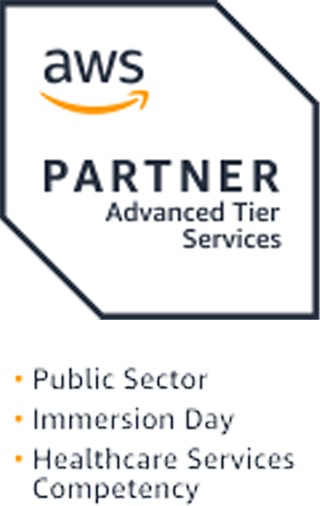When healthcare organizations change EHR systems, there are many factors to consider. Without the proper plan and support, detrimental and expensive mistakes can be made. However, when a trusted advisor and partner is chosen, the process and outcomes will benefit providers, patients, and the organization. Patient data is the key to solving many of the challenges facing healthcare today. It is important to put together a plan and work with a partner that will ensure its integrity.
EHR data conversion services is the process of taking data from a legacy electronic health record system and transferring it to a new system. This process is commonly referred to as ETL. During an ETL conversion, patient data is EXTRACTED from the legacy system, TRANSFORMED to align with the map created for the new system, and LOADED into the new system.
EHR data conversion services can be completed through two methods:
Manual Abstraction
Chart abstraction is the process where important information is collected from a patient’s medical record and transcribed into discrete fields or locations within the new EHR. This is a manual data entry effort where organizationally-defined, clinically relevant elements of data are collected from the legacy system and manually entered into the new target system.
Manual data abstraction has a lower initial cost; however, costs exponentially increase with each record. Therefore, it is cost effective when the data set is small, but prohibitive in many instances when the data set includes greater than 30,000 records. Furthermore, this method of conversion is subject to a great deal of human error, and each record runs a significant risk of manipulation.
Automated Data Conversion
In an automated conversion, source values are extracted from the legacy (source) system and transformed into the new (target) system’s defined specifications, creating a conversion map of legacy system values in the new system’s data format. That map is loaded into conversion utility software to provide the ability to transform the data and apply the conversion specifications to alI legacy records, allowing the target system to properly ingest and display the legacy data. While it is being transformed, the conversion utility is monitoring: total errors, parsing errors, mapping misses, percent complete, date/time to finish, and success rates. After the data has met the standards, it is then loaded into the new system.
During an automated data conversion, not a single patient record is manually touched. Companies who specialize in healthcare data conversion services should utilize a failsafe ETL methodology specifically designed to mitigate clinical risk.
While the initial cost is higher than a manual data abstraction, the additional costs associated with each record are substantially less. Therefore, it is cost prohibitive for smaller data sets, but cost effective when working with datasets greater than 30,000 records.
EHR Data Conversion Process
1. Discovery
During the discovery phase of the process, your team will play a large role. Keystone will extract in scope data from the legacy system or work with your internal IT staff to gain access to the data from the current system. Working together with your internal designated leader, IT staff, and Physicians Advisory Committee (PAC), Keystone will work to identify how much data is available, what data needs to be converted, and the accuracy of the legacy data.
2. Scope Definition
The scope definition phase of the process is the point at which both parties come to an agreement on which portions of the data needed to be converted, the method of the conversion, and the prioritization of the data. During this time, the two teams should schedule time to review the records, format them to meet the new formatting requirements, and set the processes to update record fields not available in the conversion.
3. Testing
Once the scope has been fully defined, and the formatting requirements are completely understood, the primary responsibility of the conversion then shifts to the vendor. Based on the input gathered during the scope definition step, the data architect working for the vendor will map the data field and formatting from the old system to equivalent data fields and formatting in the new systems. After the map has been created, the data architects upload the test conversion data to a testing environment.
4. Validation
This step is a shared responsibility between you and Keystone. Once the data has been loaded to the test environment, the data architect evaluates the data. Then your team reviews the content, validates the records, and signs off on the final data set. This step may require several cycles and is imperative for the success of the conversion.
5. Migration
Once the data has been validated, Keystone will execute the final migration. While the data is migrating, Keystone’s conversion utility will be monitoring total errors, parsing errors, mapping misses, percent complete, date/time to finish, and success rates. When all the data is converted and migrated to the new system, your new EHR will go live!
Extract-Transform-Load (ETL) Conversion Methodology
Keystone’s ETL methodology begins with the security of the data in mind. All extracted data will remain within a client’s secure internal network under any security policies and procedures that are in place for the client. We accomplish this by making use of development devices placed on the local network, such as VM’s and servers to perform the ETL work onsite. Local and remote VPN access to these devices provides the ability to perform work onsite, whether actually onsite, at the client site, or working remote.
Key to the success of any automated data conversion is full access to the data, whether the actual database itself, a restored backup of the database, or access to a report-writing tool that the client has in place for data access. Our clients experience the greatest success when testing actual production data rather than test data. Test data does not typically follow complete workflows as records set up in test environments are to test specific items and leave other required items non-populated.
We have a framework that we use to transform the extracted data into the receiving system’s import specifications which can include direct database loading, generations of HL7 or CCD formats, or produce flat-files for loading into the target system. This framework also logs all modifications made to the data and flags any errors that could prevent a record from successfully loading. These logs can then be used to provide lists of items requiring terminology mapping to target system values.
Before concluding any data conversion project we ask our clients to provide resources to adequately and successfully test the converted data until they are satisfied that the data will reside in the new system as it should. We also require sign-off on the testing giving us permission to load the data into the New production environment.
As the healthcare industry prepares for the aging population, a shortage of providers, increased need for chronic disease management, and financial pressures, technology and data are becoming ever more important. As a result, healthcare organizations that take steps to prepare for these changing demographics, prioritize physician satisfaction, and utilize systems to improve care coordination will require a strong IT partner.
Conclusion
EHR’s have already proven that they have a positive impact on patient care. However, many providers have expressed dissatisfaction with their current EHR provider. Furthermore, the industry is experiencing a merger and acquisition movement. These two trends are driving the need for EHR data conversion services for many healthcare organizations.
Not all EHR data conversion vendors are the right partner for you. It is important that you find a partner who values your data, can meet your needs, and will deliver a successful conversion.


